| T O P I C R E V I E W |
| cerambyphil |
Posted - 20/03/2013 : 22:52:59
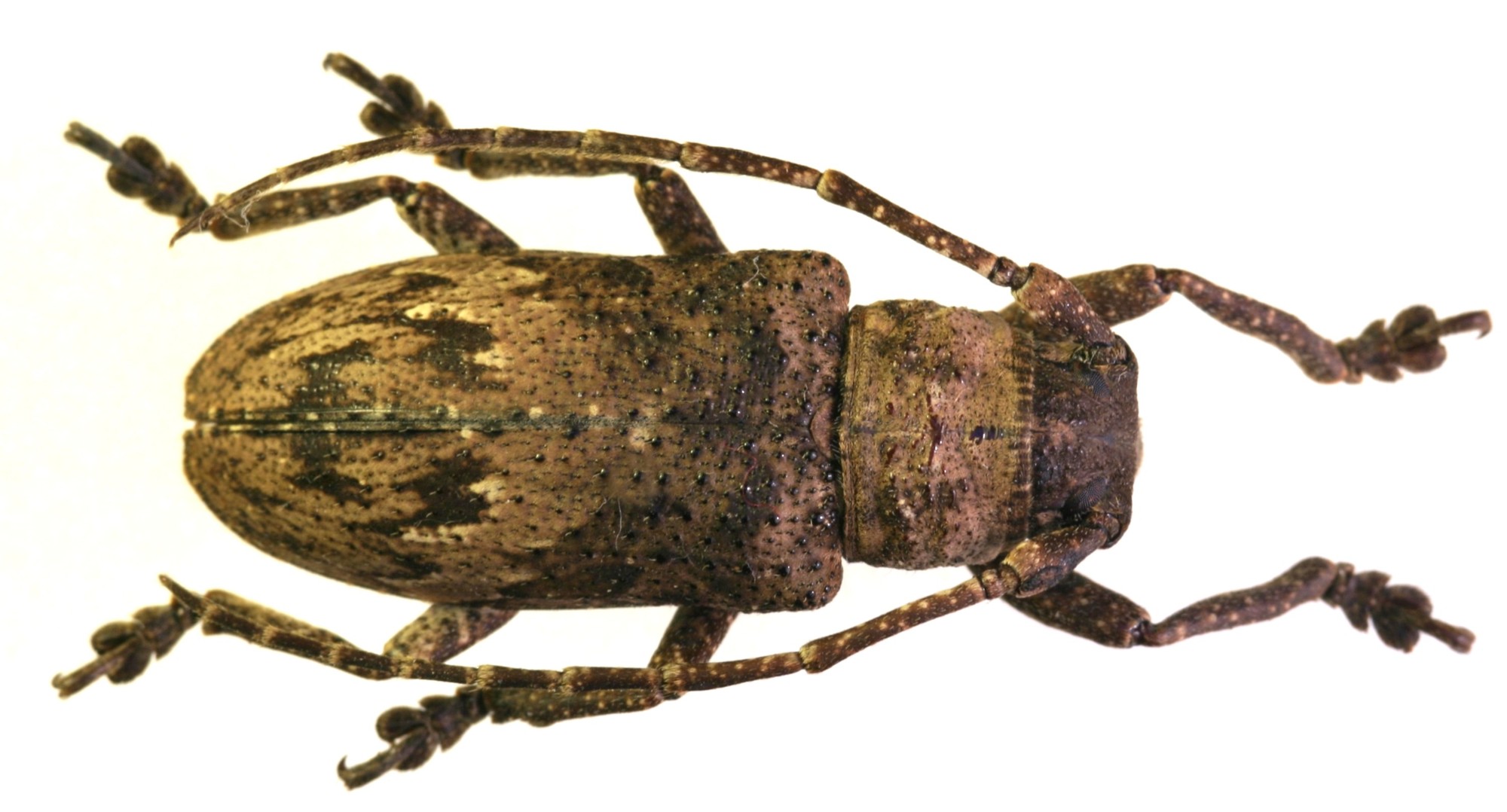
263.69áKB
Bacan, 25 mm |
| 14 L A T E S T R E P L I E S (Newest First) |
| Xaurus |
Posted - 25/03/2013 : 00:50:09
Yes, I agree, the scapus is different in Sotades and Eczemotes and by the later the granules on the surface are different and also on the legs.
Within the genus Eczemotes there is still a confusion, first I'll check the original descriptions and type material too. Maybe Breuning described the males in the genus Escharodes because nothing is mentioned by Eczemotes about the coxal spines. |
| Francesco |
Posted - 24/03/2013 : 13:30:15
On ne voit pas beaucoup... de toute fašon le scape est globuleux (erste Glied kurz, stark gekeult): Sotades platypus. |
| cerambyphil |
Posted - 24/03/2013 : 12:58:42
Voici vue de profil du prosternuim et scape :

125.92áKB

307.98 KB |
| Andre |
Posted - 24/03/2013 : 11:16:36
I think Philippe's Spec. is Sotades platypus, the same as mine Spec. from Hiri Isl. / left site (near Ternate, Typ - Loc. from Sotades platypus).
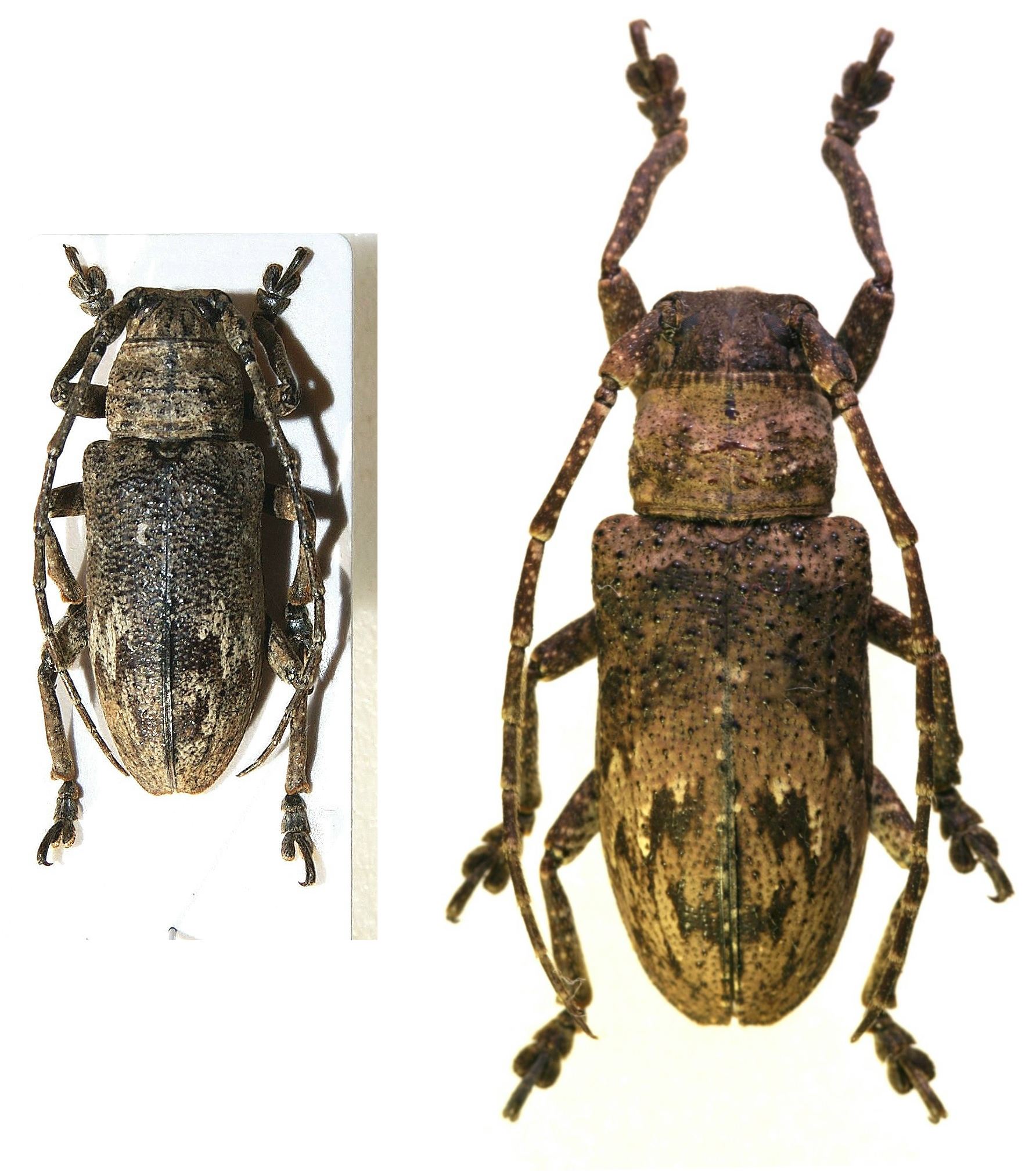
357.46áKB
The best differences to Eczemotes is might be the different scape.
Left site: Sotades from Hiri Isl. and right site Eczemotes cf. undata from Kei Isl.
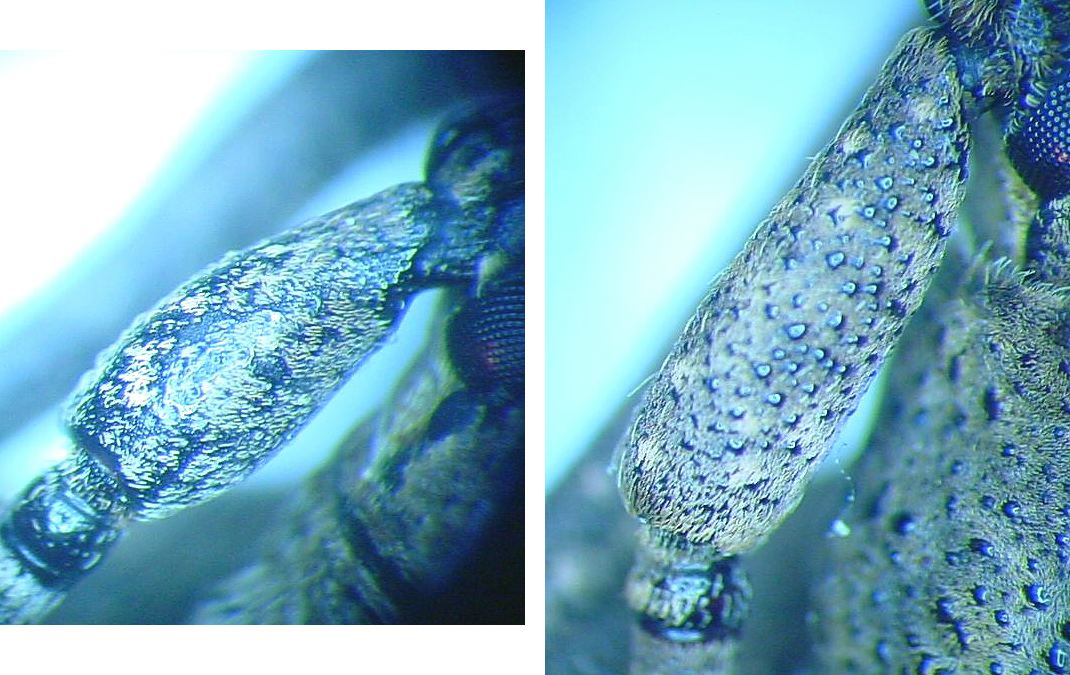
126.12áKB |
| Francesco |
Posted - 24/03/2013 : 10:09:35
It seems to me rounded, but a lateral view is preferable. |
| cerambyphil |
Posted - 24/03/2013 : 09:59:52
Here is the prosternum of my spm :
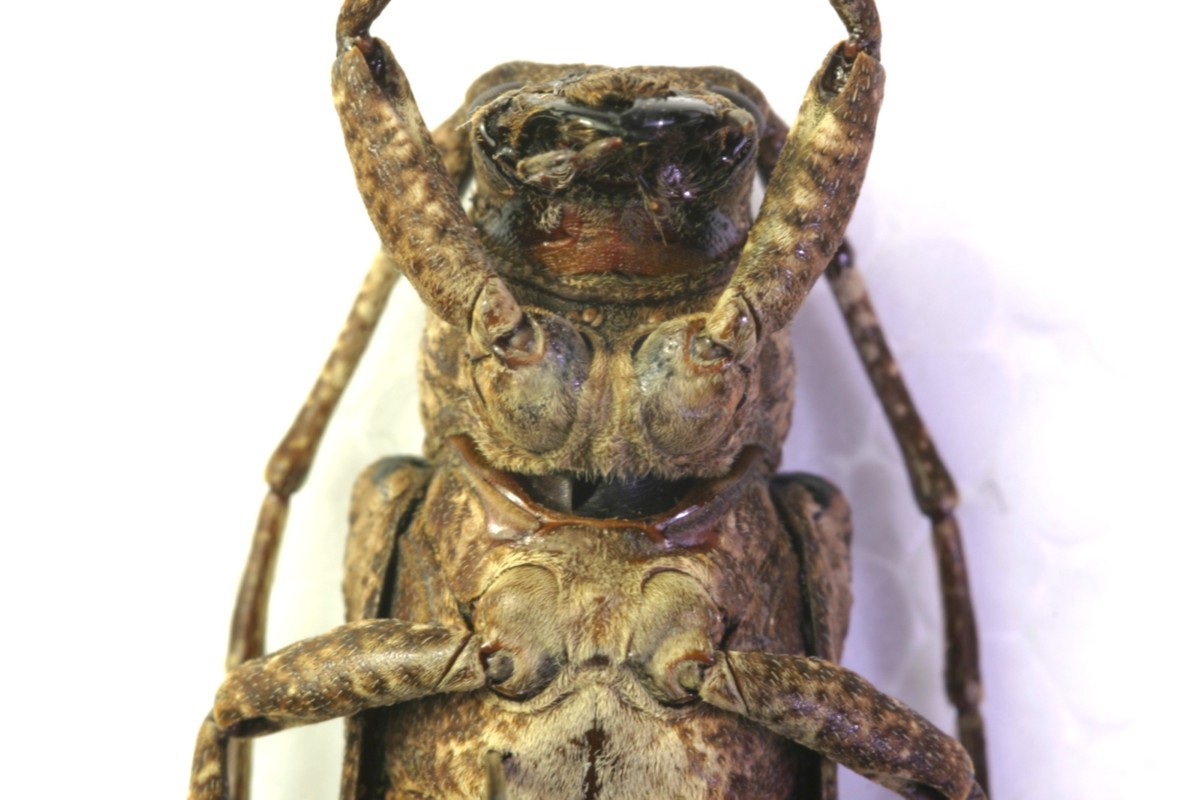
141.28áKB
Sotades or Eczemotes ? |
| Andre |
Posted - 23/03/2013 : 17:38:12
An interesting thema.
In the picture the underside of my Sotades platypus from Hiri Isl. (left site: Female; right site: Male with very small spines!)
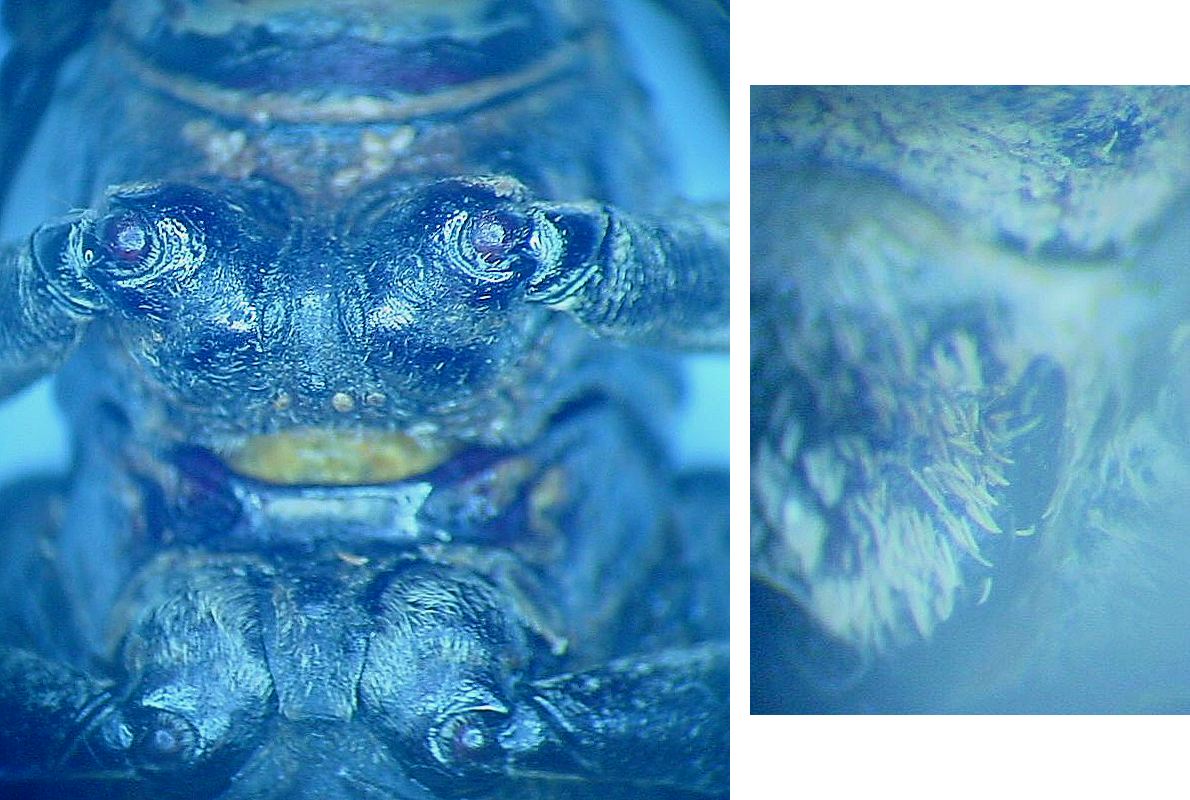
155.26áKB
Here the underside of a female of Eczemotes granulosa Breuning from Raja Ampat/ Batanta.
The prosternum is nearly the same as by Sotades. The male have the same spines as S. platypus!
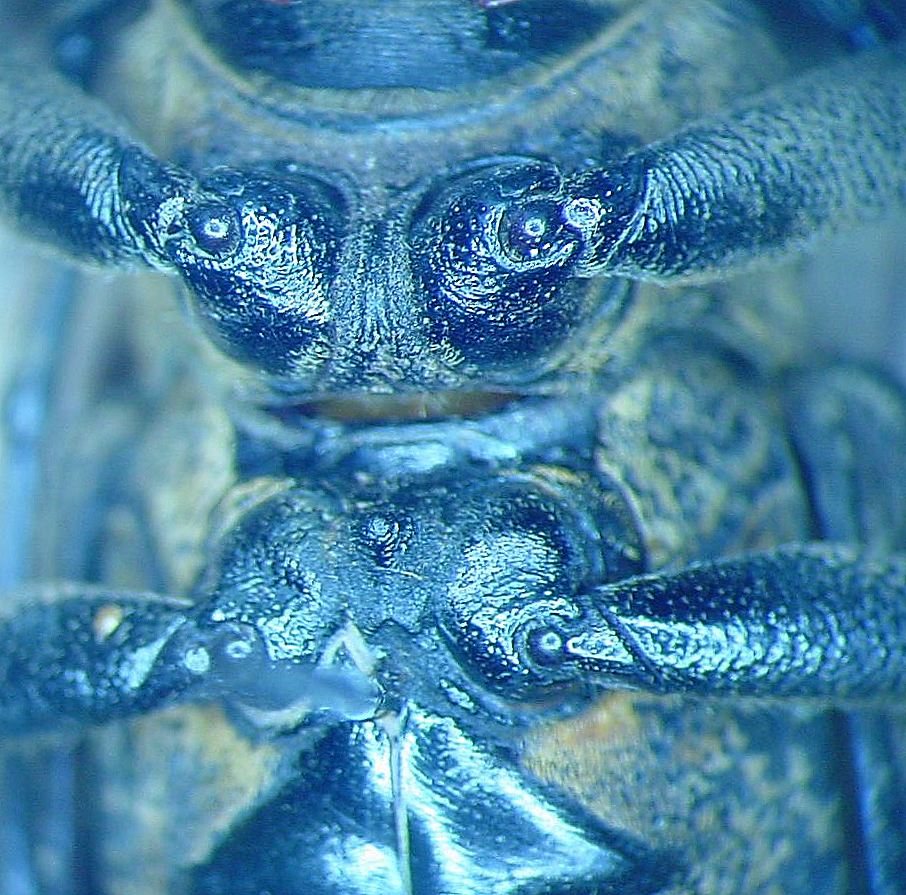
177.62áKB
I also have 2 males of cf. Eczemotes undata M. from Kei Isl.
The large male (28 mm) has distinctly spines, the small male / (Picture, 21 mm) without spines !!!
Collected on the same wood.
I mean the best difference is the scape.
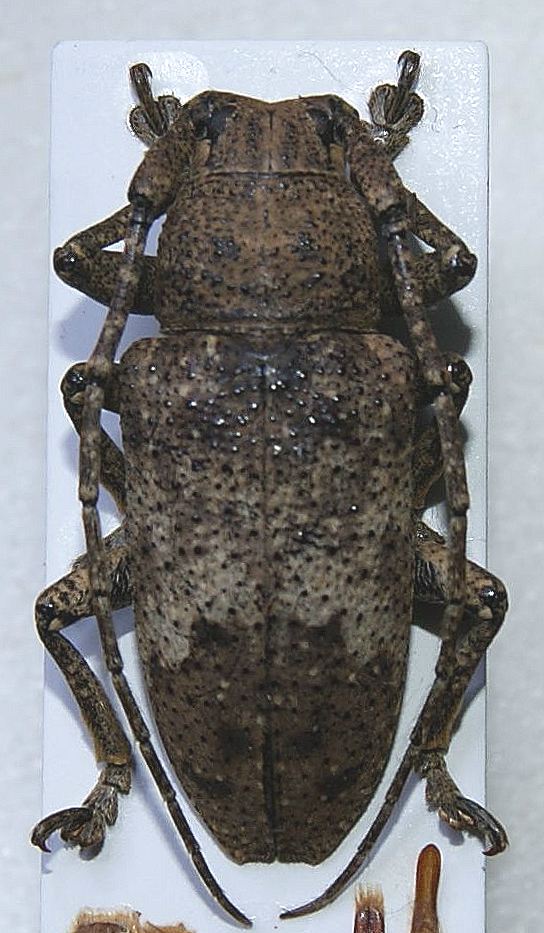
97.69áKB |
| Francesco |
Posted - 23/03/2013 : 16:01:11
Dear Andreas, I have not got this species in my collection.
I have observed that long spines on male procoxae are present in the Prosoplus sg. Escharodes. Convergent evolution or taxonomic mistake? |
| Xaurus |
Posted - 23/03/2013 : 15:23:59
Dear Francesco,
I have checked all my Eczemotes (W-Papua, PNG, Aru) they have a behind rounded prosternal process, the mesosternal process is truncated anteriorly and with a tubercle.
I have only 1 female from Halmahera could be Sotades platypus. Have your males of Sotades the typical spines on the fore coxae ?
greetings
Andreas |
| Francesco |
Posted - 23/03/2013 : 13:37:26
According to Breuning, Sotades differs from Eczemotes in the shape of the prosternum: posteriorly truncated rather than rounded.
There is only one species (?) widespread in the Moluccas. |
| cerambyphil |
Posted - 22/03/2013 : 16:11:12
No Xaurus, I just have one spm above. it has a light process on the metasternum. |
| Xaurus |
Posted - 22/03/2013 : 11:55:41
It could be also Sotades platypus, I don't know the differentation between Sotades and Eczemotes well, maybe the scapus is different (Sotades: short and thick, Eczemotes: longer, less thick).
I have id my spms acc to material preserved in ZMB, but I'm not satisfied as well. Furthermore I haven't seen any type material of both genera.
Remarkable are the long spine on the fore coxae by the males, not mentioned in Breuning's revision. You have males with spines ? |
| cerambyphil |
Posted - 21/03/2013 : 12:48:48
Thank you Xaurus.
My spm seems close to the following species.
Is it identicaly ? |
| Xaurus |
Posted - 21/03/2013 : 00:54:20
Eczemotes spec. |


